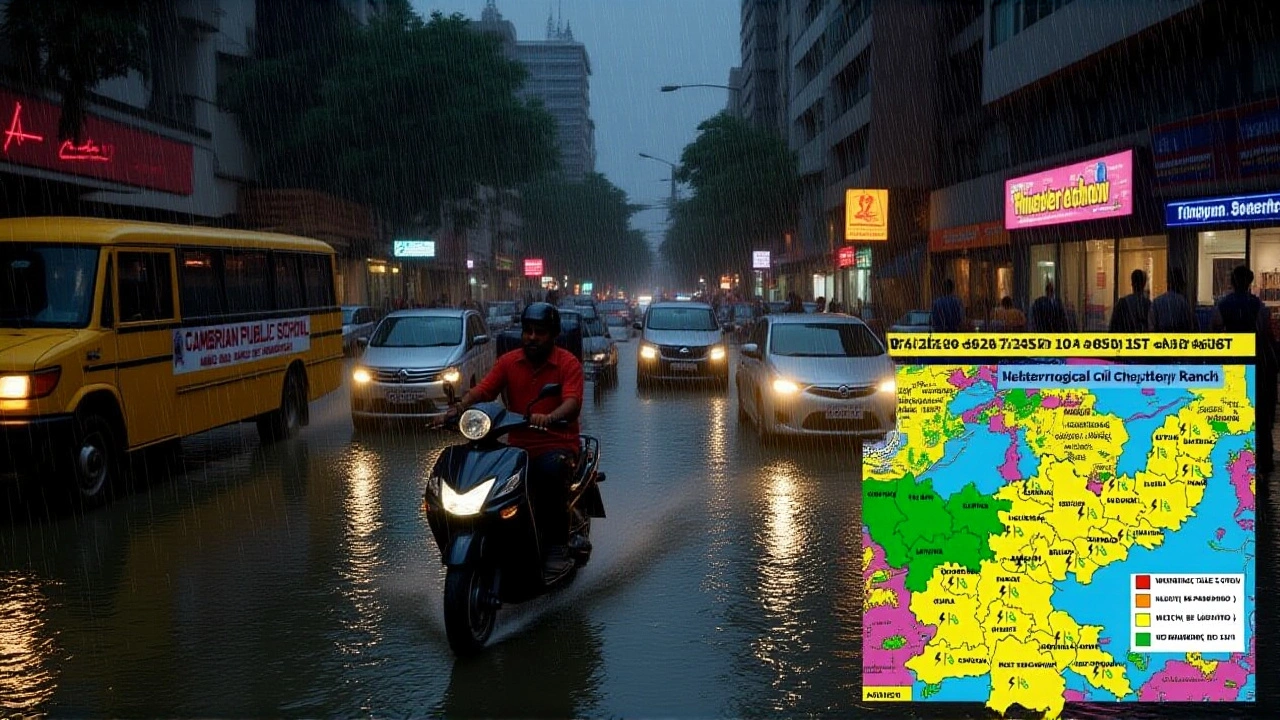Weather: Latest Alerts, Forecasts, and Impact in India
When talking about Weather, the state of the atmosphere at a specific time and place, covering temperature, precipitation, wind, and more. Also known as meteorological conditions, it drives daily plans and long‑term decisions. A related phenomenon is Cyclone, a large rotating storm system that brings intense rain and strong winds, which often triggers Weather Alert, official warnings issued to inform the public about hazardous weather. In India, the India Meteorological Department (IMD), the national agency responsible for monitoring and forecasting weather issues these alerts. Weather influences travel, agriculture, and safety across the country.
Why Weather Alerts Matter
Weather alerts are more than just messages; they are critical tools that help people prepare for dangerous conditions. When a cyclone approaches, the IMD assesses wind speed, rainfall intensity, and potential flooding to decide whether to issue orange or yellow alerts. An orange alert signals high risk, while a yellow alert indicates moderate risk but still demands caution. This system ensures that officials, emergency services, and citizens receive timely information, reducing the chance of injury and property loss. For example, the recent orange and yellow alerts for 20 districts in Jharkhand warned residents about heavy rain, thunderstorms, and possible lightning strikes, prompting schools to stay closed and families to secure outdoor items.
Jharkhand, a state with varied topography, experiences rapid weather changes during the monsoon season. The combination of cyclonic moisture and local valleys can amplify rainfall, leading to flash floods in low‑lying areas. By understanding how a cyclone influences local weather patterns, residents can make smarter choices—like avoiding travel on flooded roads or moving valuables to higher ground. The IMD’s detailed forecasts also help farmers decide when to sow or harvest crops, protecting livelihoods that depend on predictable rain patterns.
Beyond immediate safety, weather alerts play a role in long‑term planning. City planners use historical alert data to improve drainage systems, while designers of infrastructure consider the frequency of severe weather when choosing materials. Insurance companies assess risk and set premiums based on the frequency and severity of alerts in a region. Even businesses such as logistics firms adjust delivery routes in real time, avoiding delays caused by severe storms.
Our collection of posts below dives deeper into these topics. You’ll find clear explanations of how the IMD monitors cyclonic activity, step‑by‑step guides on preparing your home for heavy rain, and updates on the latest alerts affecting Jharkhand and neighboring states. Whether you’re a student, a commuter, or a farmer, the articles offer practical advice you can act on right away.
Ready to explore the newest weather reports and safety tips? Scroll down to discover detailed alerts, expert analysis, and actionable steps that keep you ahead of the storm.
 6 October 2025
6 October 2025
IMD Issues Orange & Yellow Alerts for 20 Jharkhand Districts Amid Cyclonic Threat
IMD issued orange alerts for five districts and yellow alerts for fifteen in Jharkhand as cyclonic moisture brings heavy rain, thunderstorms and possible lightning strikes.
Latest Posts
-

Why does the Indian news media only cover politics?
-

What is the best online course for life coaching?
-
What in-flight services are available in Air India flights?
-

Data firm puts PM Narendra Modi's net approval at high of 55%?
-

Aries Tarot Forecast for November 15, 2025: Watch Spending, Avoid Injuries, Navigate Workplace Shifts
0